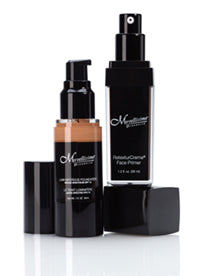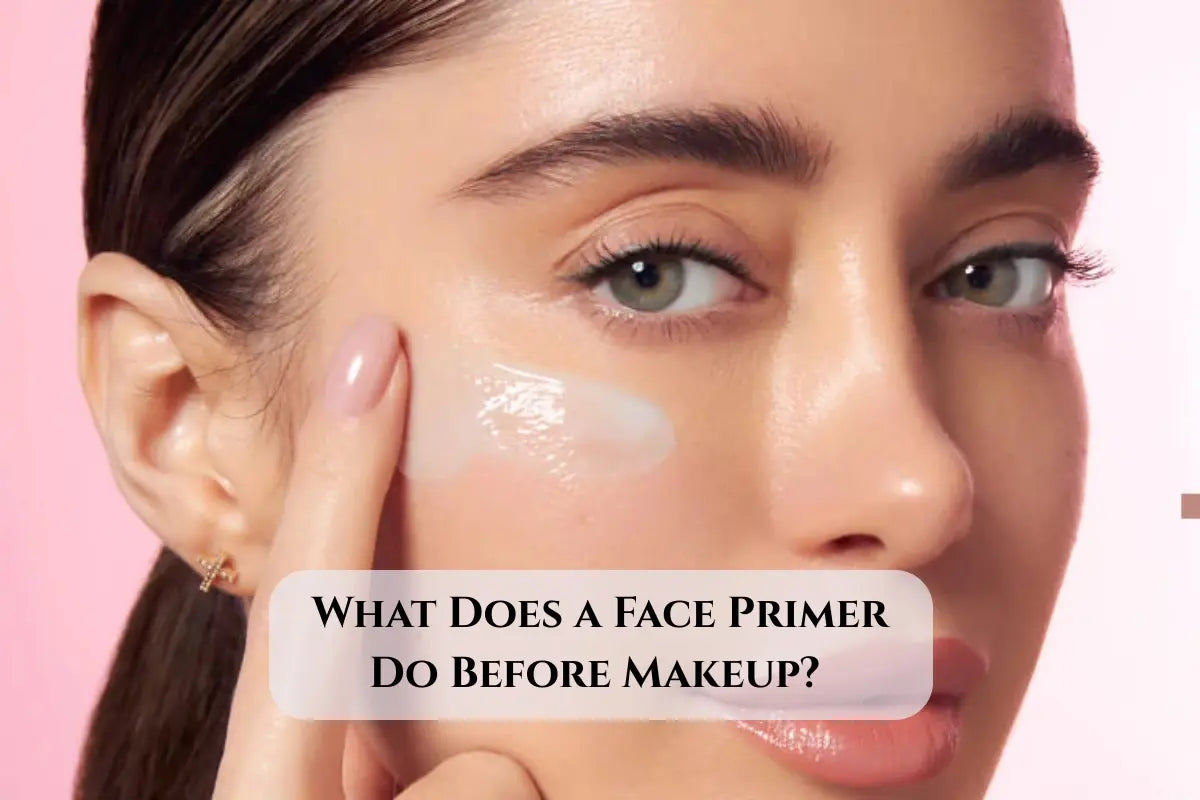
Article Detail
04 Jul
- 0 Comment(s)
- /
Why Face Primer Matters
In the makeup industry, a face primer is an important cosmetic that enjoys a lot of praise from professionals for its well-defined uses. If you have had a problem with makeup disappearing too soon, settling into soft wrinkle lines, or appearing overly caked, the fix could be far more straightforward than you imagine. The essence of a good face primer is that it provides an even surface, which prepares skin for makeup and makes it easy to remove later—allowing skin to breathe afterwards. So, what does face primer do, and how can it be used? Let’s get more information.
What is the face primer?
A skincare step that uses lighter products such as lotions and gels, which does not include application of moisturizer, is the correct order to apply face primer. The main role of face primer is to help in preparing the skin to be made up. It is applied to aid the skin by removing all the blemishes and scars to allow the "foundation" (makeup) to sit smoothly on the skin. Consider this example: just like one requires a white base for drawing a portrait, a wall that requires two coats of paint needs primer that will remove any bumps and allow for longer and stronger retention. B is for bumps and blanks, which permit graphics alongside better adherence. Based on the aims that have been detected in the skin, primers also help the girl to desist from dealing with oil and help to hydrate the face while countering its color.
Benefits of Using a Face Primer

1. Smooths Skin Texture
Primer is known for blurring different skin imperfections like pores and fine lines. If your skin has uneven texture, a primer will induce a soft-focus effect to make it appear smoother. If you use silicone-based primers, you will notice that they fill in the pores and fine lines, giving a makeup.
2. Extends Makeup Wear
Have you noticed your foundation separates after a few hours? This could be because of oils and sweat that your skin is producing. A primer serves as a protective layer between skin and makeup, allowing the makeup to last longer. This is particularly helpful during long days, special events, or even in hot weather where makeup tends to wear off faster.
3. Controls Oil and Shine
Women with oily skin can rejoice because a primer has oil-controlling benefits. For instance, a mattifying primer will control excess oil and keep shine at bay. Also, greasy foundation will be avoided. Grab a silica- or clay-infused primer since they work wonders in controlling oil production.
4. Hydrates Dry Skin
Also, if your skin is on the dry side, hydrating primers ensure that makeup won’t settle into any fine lines or cling onto dry patches. Moisturizing primers having hyaluronic acid or glycerin are optimal, as they aid in providing moisture to ensure smooth use of foundation and keeping it looking fresh after usage.
5. Color-Corrects and Brightens
Addressing specific skin concerns with tinted primers is also possible. Green goes well with redness, lavender with dull skin, and peach with dark circles. With these, the need for heavy color correctors reduces, enabling a more natural look.
6. Enhances Makeup Application
Aside from improving makeup longevity, primers can improve makeup quality as well. Some illuminating primers give the skin a soft glow, while some blurring primers smooth the skin for a soft-focus look, making it appear airbrushed. Enhancing the vibrancy of makeup pigments like blush and highlighter is also achieved with some primers.

Who needs to use a Face Primer?
While not every person needs a face primer, it can be optimal for those who:
Skincare and makeup concerns
• Possess oily or combination skin, experiencing makeup sliding off.
• Dry skin and seeing a cling of foundation on dry patches.
• Visible pores, fine lines, and uneven texture.
• Makeup users for extended periods, under challenging conditions (heat, humidity, etc.)
• Desiring more refined makeup.
If makeup and skin care habits are already balanced and makeup does not require primer, the individual may not need it. However, most individuals can refine their makeup routine if they add a primer.
How to Select the Right Primer for Your Skin Type

For oily skin: Choose peel primers with oil-absorbing ingredients like clay or silica. They control shine and keep your makeup intact throughout the day.
For dry skin : find primers containing hyaluronic acid or glycerin, as they are moisturizing primers. Primers also help in retaining moisture while preventing makeup from settling into dry patches.
For Combination Skin: A perfect primer for this skin type is one that balances oil control within the T-zone and hydrates dry areas. You can apply different primers on different areas of your face too if that works best for you.
For Large Pores or Rough Texture: If your pores are large and your complexion is bumpy, silicone-based primers will be your best friends in filling them up and smoothing everything out.
For sensitive skin: Look for fragrance-free, hypoallergenic products containing calming ingredients such as aloe or chamomile.
How to Apply and Get Best Result of Your Primer
1. Start with clean and moisturized skin. It should be prepped with skincare, so a moisturizer is important. Primer will not do the job of a moisturizer.
2. Start with a pea-sized amount. Too much will weigh down the skin with makeup, and too little will go a long way.
3. Apply to the face in even strokes. Focused areas need the most attention, for example, the T-zone for oil control or the cheeks for pore-blurring.
4. Give it time to set. Step away from applying foundation for a minute or two so the primer can adhere fully.
Common Primer-Using Mistakes to Avoid
- Neglecting moisturizer: This is a hydration replacement. Moisturizer must always go on first before primer.
- Excessive product use: The opposite effect could occur where makeup would faceplant off the skin surface or look overly done.
• Incompatible Primer and Foundation Bases: A silicone primer works best with a silicone foundation, just as a water-based primer is compatible with water-based makeup. Mixing incompatible formulas can lead to pilling or patchiness.
• Fast Application: For best results, wait at least a minute after applying the primer before applying the foundation.
Closing Thoughts
Whether it is controlling oil, hydrating dry skin, blurring pores, or making makeup last longer, face primers serve a purpose. With so many available, finding the right one can greatly change makeup application.




